Crabapple trees are a beautiful addition to any yard, known for their colorful blooms and vibrant fruit.
If you’re wondering how to identify one, you’ve come to the right place. I’ve spent some time learning about these trees and can help you recognize the key features that make a crabapple stand out.
These trees are often confused with other apple varieties, but there are a few simple ways to tell them apart.
From their small, often brightly colored fruit to their distinctive flowers, crabapples have traits that are easy to spot once you know what to look for.
If you’re planting one in your garden or just curious about a tree you’ve spotted, understanding crabapple tree identification can be both fun and rewarding. Let’s get started!
What Is a Crabapple Tree?
Crabapples are part of the Malus group, just like regular apples, but they grow much smaller fruit, each one under two inches wide.
These small fruits are called pomes and often taste too sour to eat raw, though some can be used in jams or jellies.
Most crabapple trees grow between 8 and 30 feet tall, making them great for both small yards and larger parks.
Their branches often form a rounded or wide shape, creating a full, dome-like crown that provides nice shade without occupying too much space.
One thing that sets them apart from apple trees is that crabapples often bloom and grow fruit at the same time. Their flowers usually come in pink, white, or red, and their fruit can range in color from red and yellow to green.
Many kinds keep their fruit through fall and into winter, adding color to the garden even when most trees are bare.
This mix of pretty blossoms and lasting fruit makes crabapples a nice choice for people who want a tree that looks good across many seasons.
Key Identification Features of Crabapple Trees
To spot a crabapple tree, it helps to look closely at its leaves, flowers, fruit, bark, and overall shape. These features make it easier to tell a crabapple apart from other flowering or fruit trees, whether you’re in a park, garden, or neighborhood.
1. Leaves
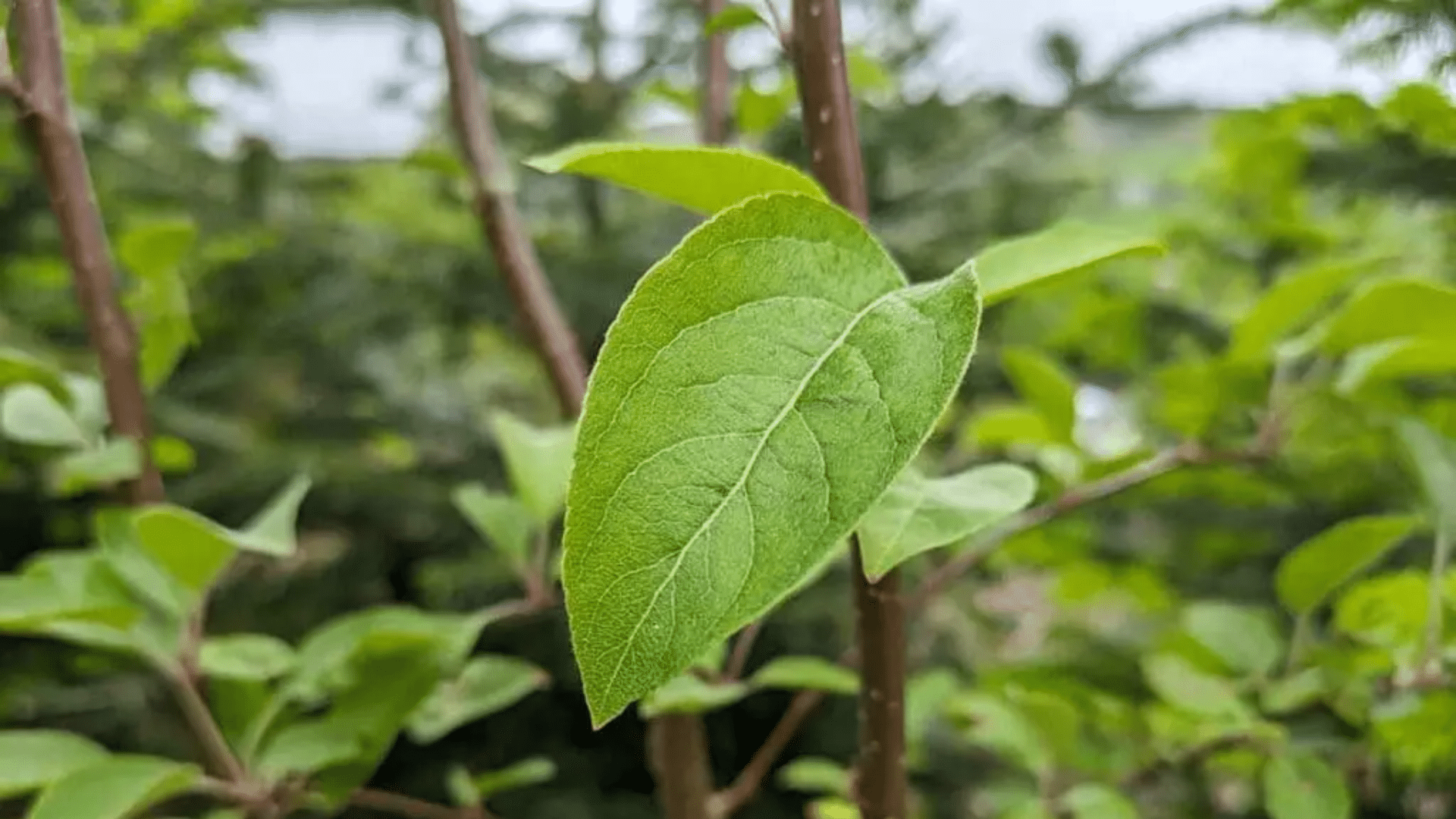
Crabapple leaves are simple, not divided into smaller parts, and shaped like an oval or egg. They usually grow 1 to 3 inches long and have smooth or slightly toothed edges.
In spring and summer, the leaves are bright green, sometimes with a hint of red in young growth.
In fall, the colors change, and you might see yellow, orange, red, or even deep purple, depending on the type of crabapple.
2. Flowers
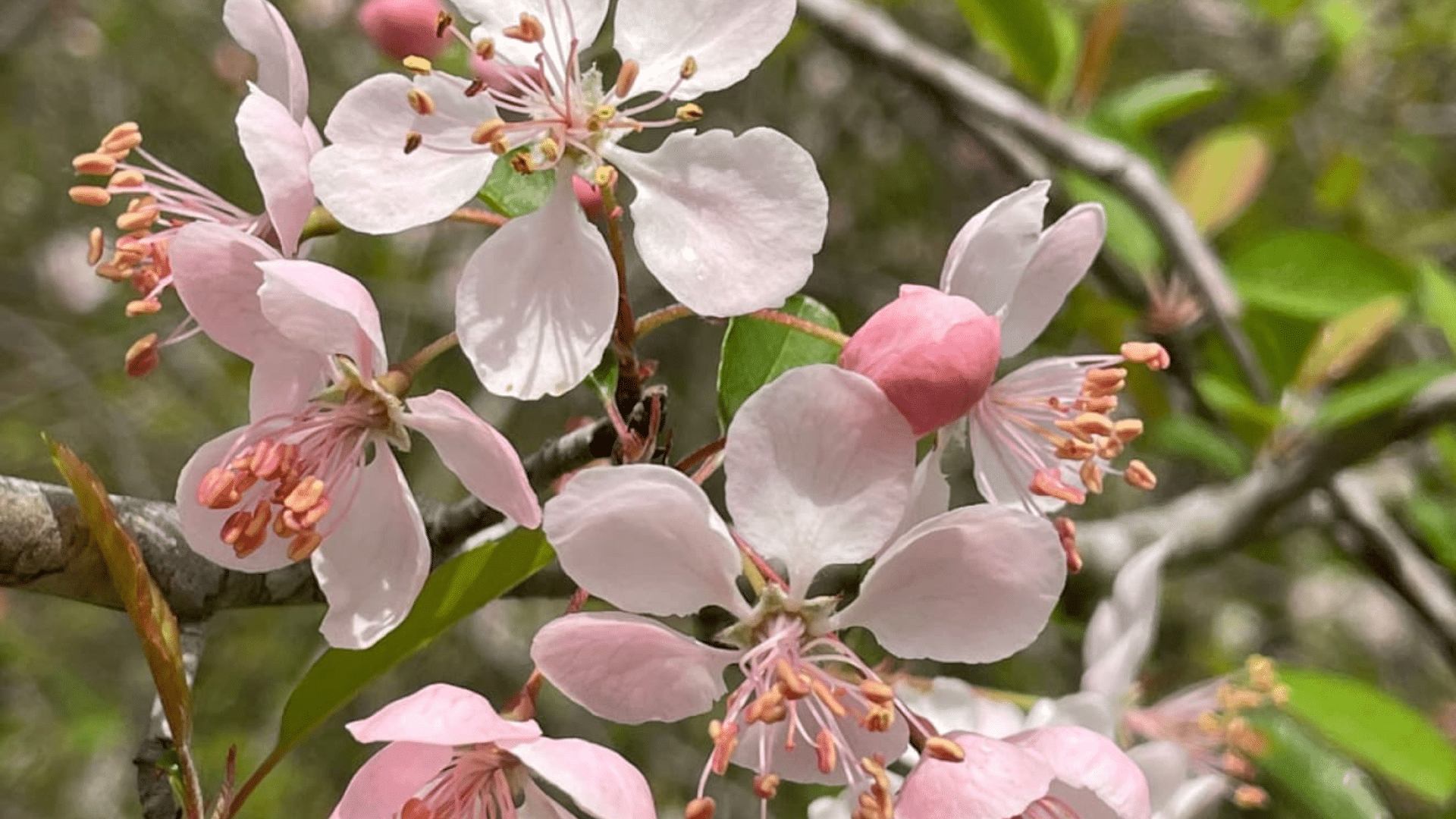
Each spring, crabapples bloom with numerous small, colorful flowers that measure approximately 1 to 2 inches across. Most blooms are pink or white, though some trees have red or blush-colored flowers.
These flowers often grow in clusters and can emit a mild, sweet scent that attracts bees and butterflies.
The blossoms typically appear before the leaves are fully open, creating a full and eye-catching display.
3. Fruit
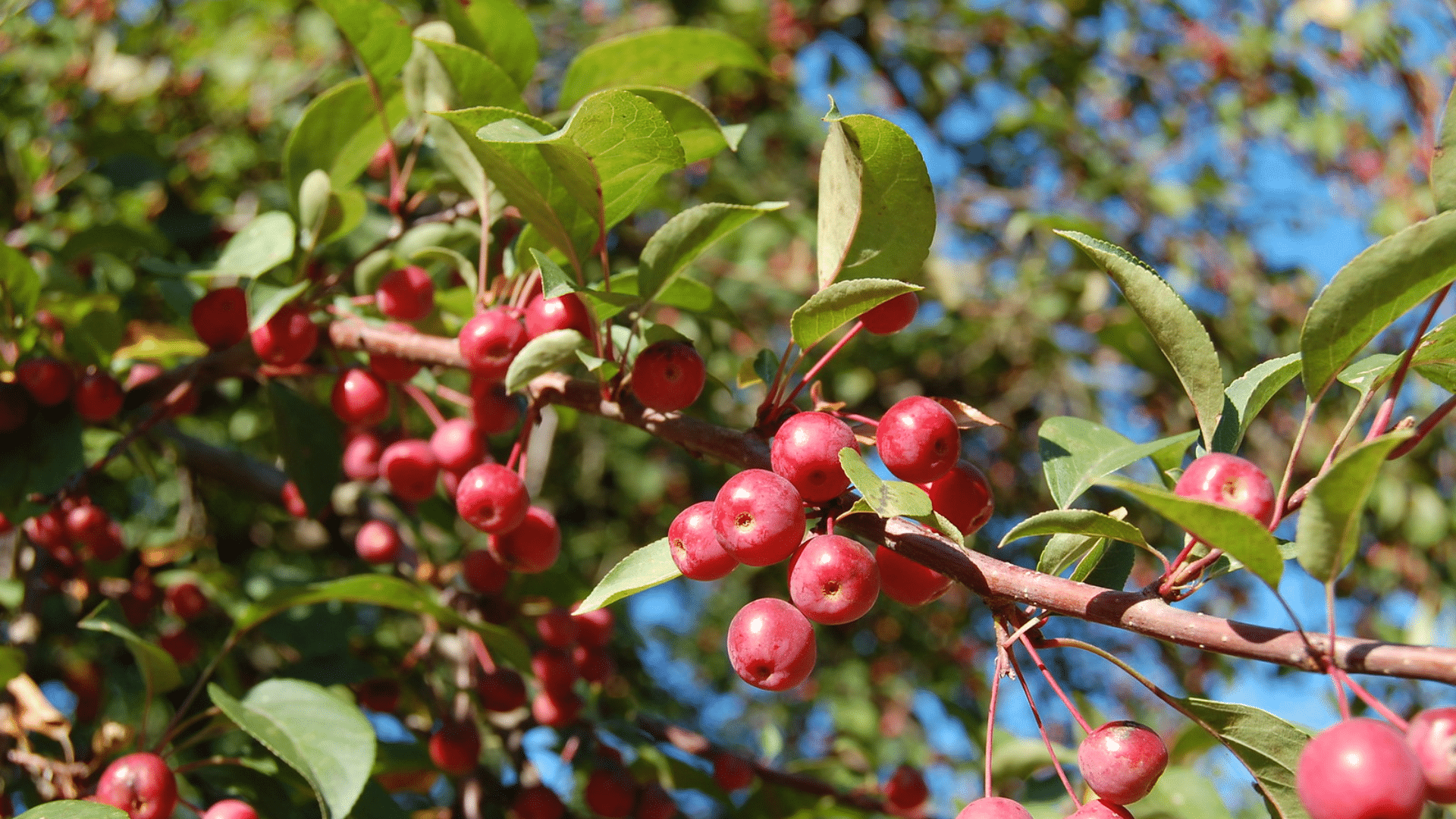
The fruit of a crabapple is called a pome, similar to an apple, but it remains much smaller, typically under 2 inches across. These fruits begin to form after the flowers fade and ripen from late summer through fall.
They can be green, yellow, orange, or red, and some trees hold their fruit well into winter.
While often too sour to eat raw, the fruit can be used for jelly or left for birds and other wildlife to enjoy.
4. Bark & Twigs
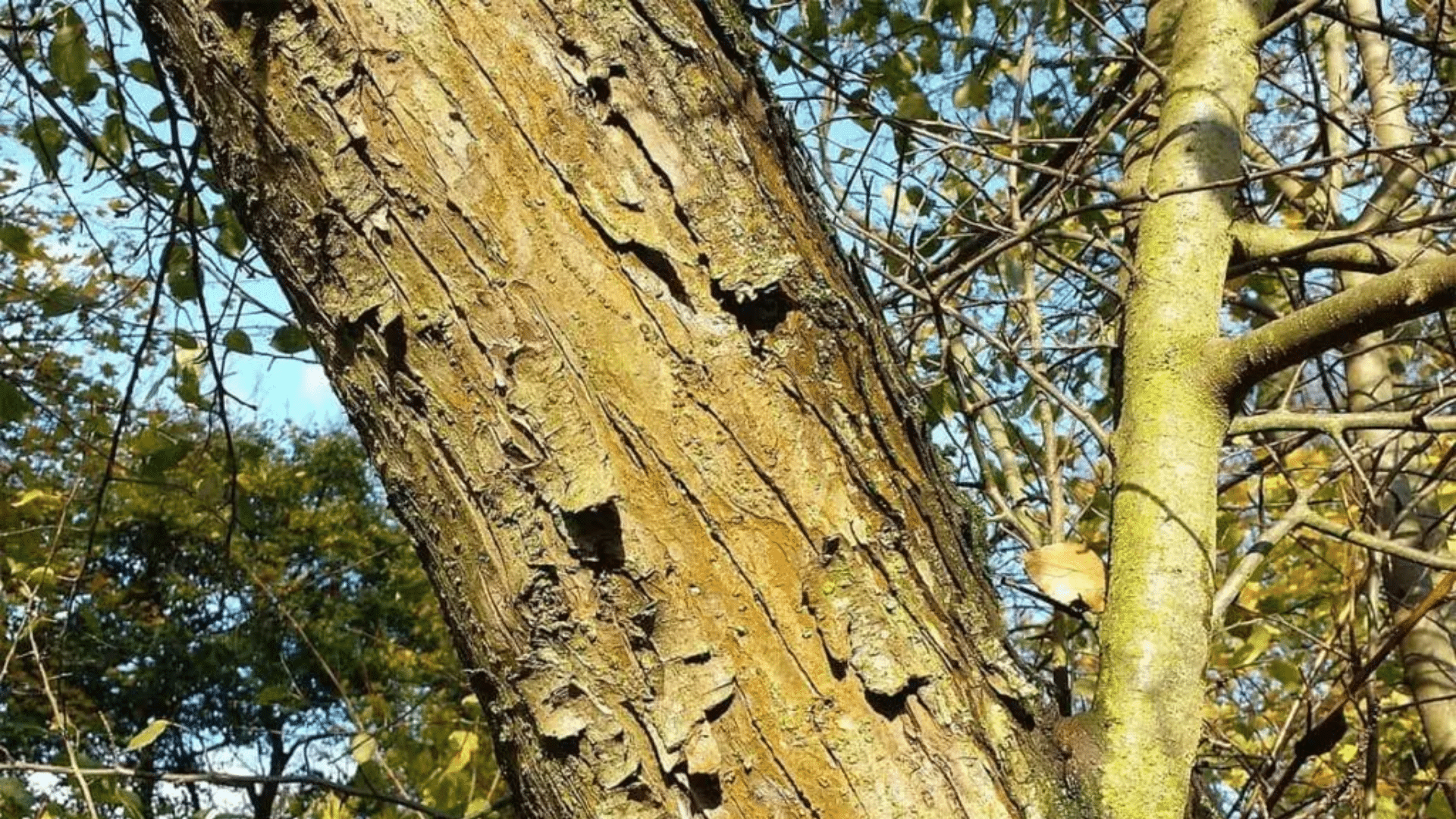
Young crabapple trees have smooth, gray bark that feels even to the touch. As the tree gets older, the bark becomes rougher and starts to split or form shallow grooves.
The twigs are usually thin and may have tiny, sharp points or thorns, which help keep animals from chewing on them. These small spines are more common in wild or older types.
The shape of a crabapple tree is one of its most noticeable features. The branches may twist, curve, or angle in different directions, which gives the tree a slightly crooked or knotty appearance.
This unusual form is likely the origin of the “crab” in “crabapple.” Most trees also form a rounded crown, making them easy to identify when viewed in a row.
By paying attention to all these features, leaf size and color, flower type, fruit shape, bark texture, and branch form, you can quickly recognize a crabapple tree in any season.
Common Varieties of Crabapple Trees
Crabapples come in many types, with different flower colors, fruit shapes, and sizes. Each one brings something special to a yard or garden. Here are four well-known varieties that people often plant for their beauty and strength:
Prairifire
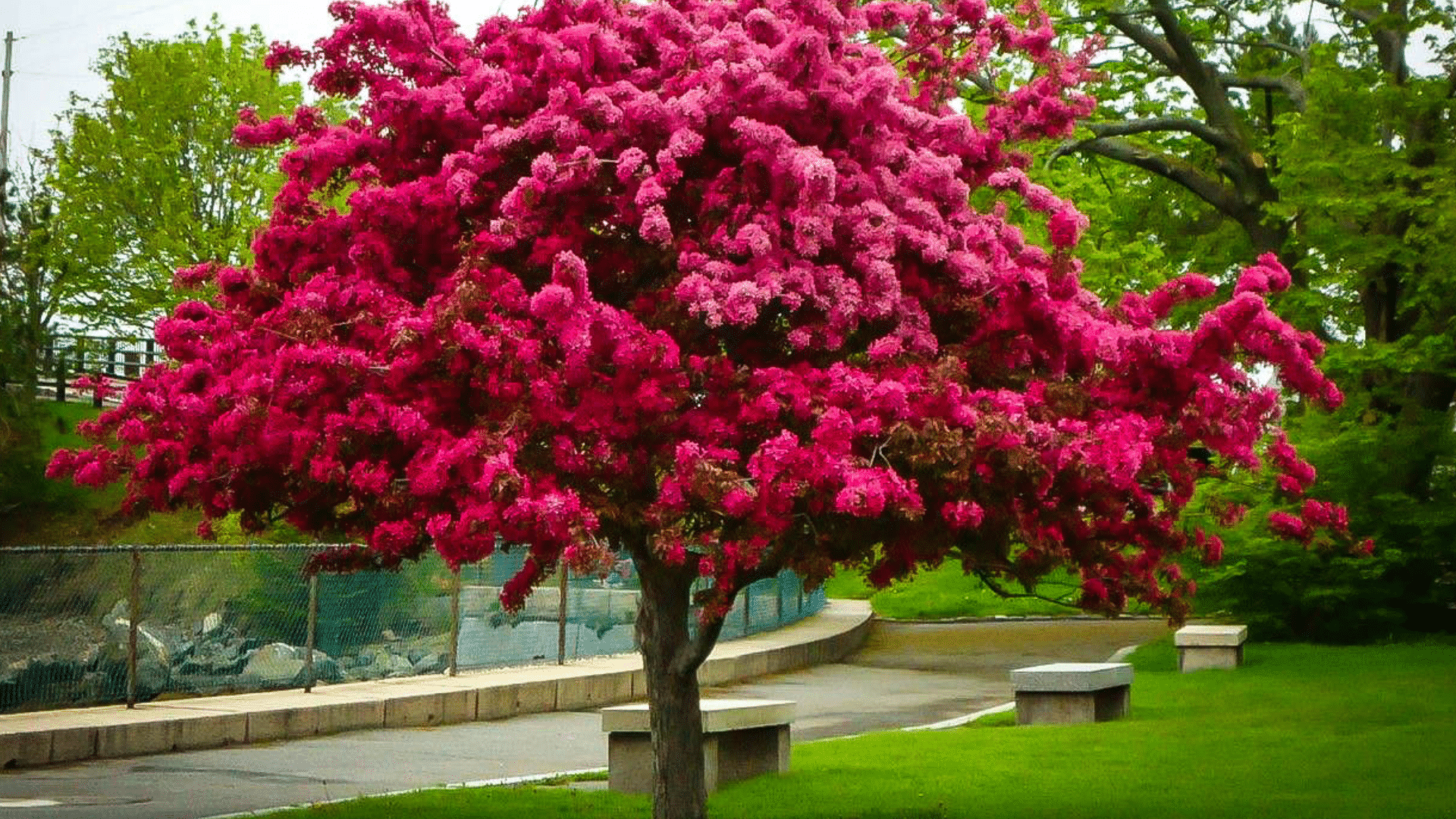
‘Prairifire’ is known for its deep pink buds that open into rich reddish flowers during spring. As the seasons change, its dark green leaves can take on a purplish tint.
In the fall, small, dark red fruits appear and often remain on the branches well into winter. This tree grows to a medium size, bringing bold color and steady interest throughout much of the year.
Profusion
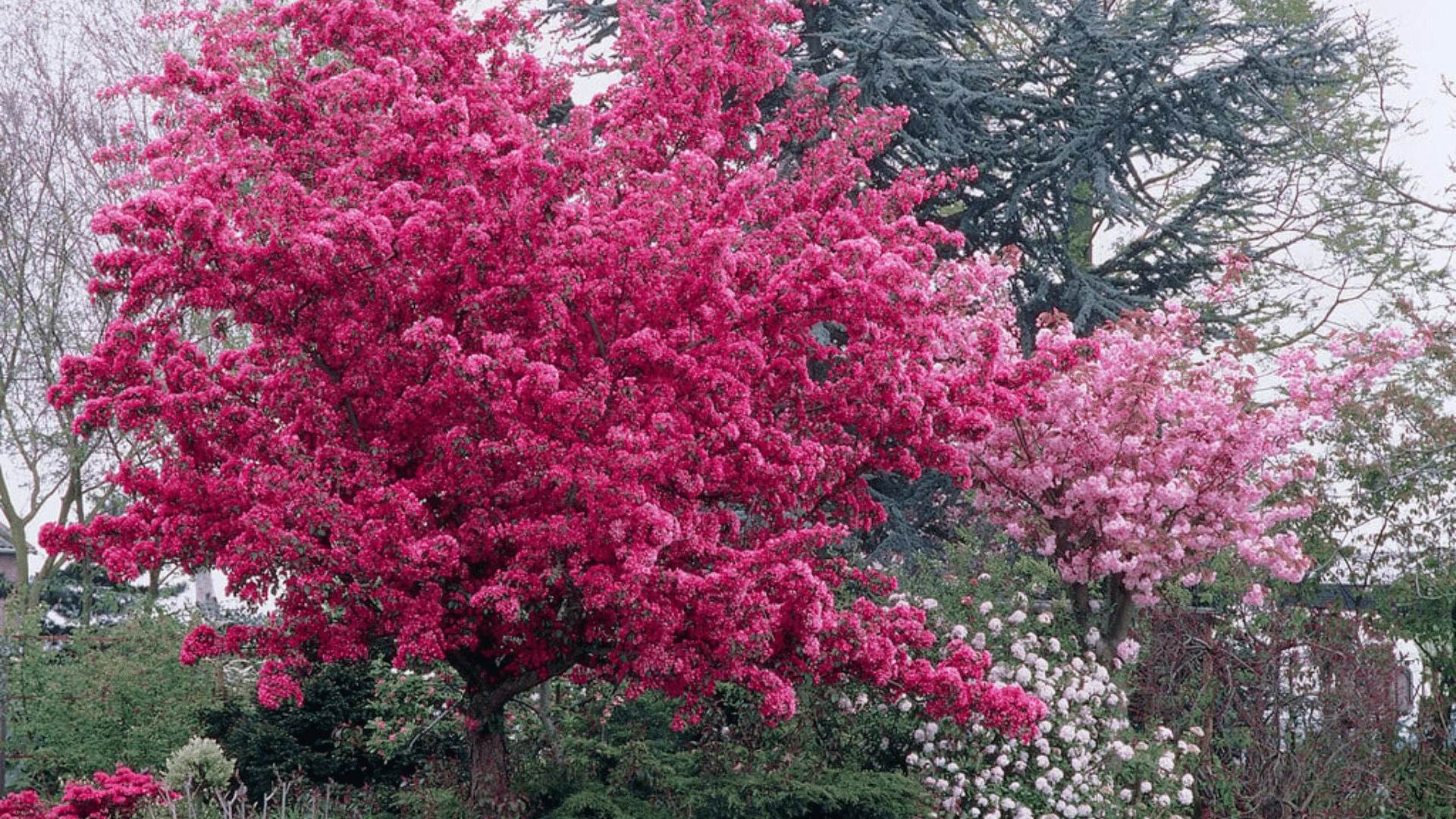
‘Profusion’ blooms with bright magenta flowers that cover the tree in spring. Its leaves often start reddish before turning green.
The tree produces small, round red fruits that appear in large numbers. These fruits hang on through fall and sometimes into winter.
It’s also one of the better types for avoiding common issues like leaf spots or mildew, making it a reliable pick for home gardens.
Cinderella
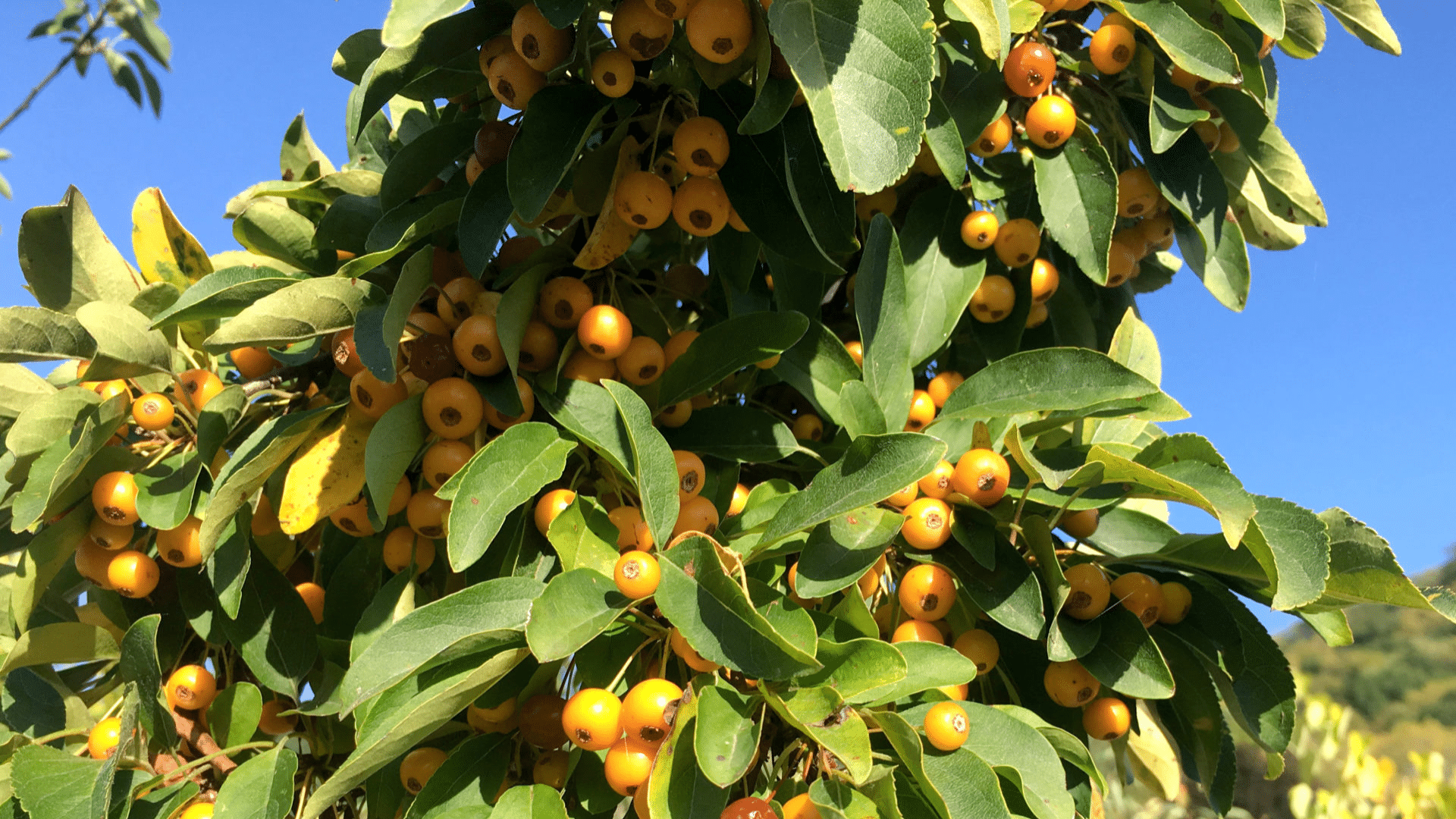
‘Cinderella’ is a small, narrow tree that works well in smaller yards or near patios.
It grows slowly and maintains its neat shape. In the spring, it displays pale pink flowers, and by fall, it produces shiny red fruit that adds a bright color to its tidy frame.
Due to its compact size and minimal care requirements, it’s an ideal choice for individuals with limited space who still desire a tree that makes a statement.
Red Jewel
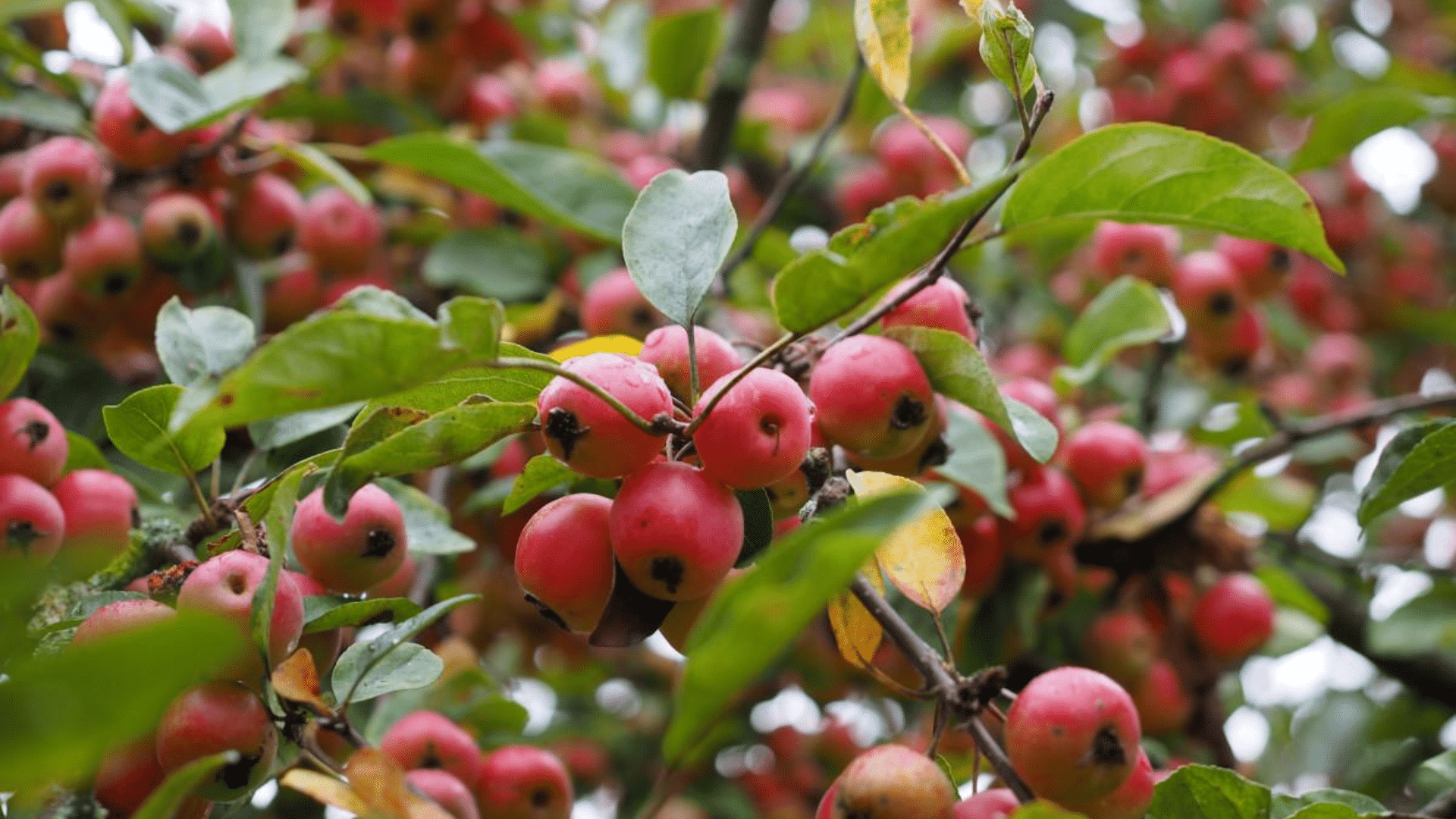
‘Red Jewel’ is loved for its white spring flowers and long-lasting, bright red fruits. The fruits are small but remain on the tree throughout winter, standing out against the bare branches after the leaves have dropped.
It features a rounded shape and sturdy limbs, making it a useful focal point in garden spaces or open yards.
Each of these varieties offers a unique blend of color, shape, and size, so whether you’re looking for something bold or small, there’s a crabapple tree that will suit your space.
Crabapple Tree Identification Mistakes to Avoid
Even I’ve made mistakes when trying to identify crabapple trees, even with some tree knowledge. Here are a few common mistakes I’ve come across and tips on how to avoid them:
- Confused with Ornamental Cherry: Cherry trees have thinner petals and smaller fruit, while crabapples have fruit under 2 inches and grow singly or in small groups.
- Mistaking Young Apple Seedlings: Apple trees have larger fruit (over 2 inches) and rougher bark, while crabapples have smaller fruit and smoother bark.
- Overlooking Seasonal Changes: A crabapple may look bare in winter, but in spring it blooms, and in fall, it bears fruit. Check the tree in different seasons for accuracy.
- Mixing with Pear Trees: Pear trees have larger, rounder fruit, while crabapples have smaller, oval fruit.
- Not Noticing the Shape: Crabapples often have twisted, gnarled branches and a rounded crown, unlike other fruit trees.
By knowing what to compare and checking the tree more than once, you’ll avoid mix-ups and feel more confident in telling a true crabapple from similar-looking trees.
Conclusion
Identifying crabapple trees is easier than you might think once you know what to look for. Remember to check the leaves, which are oval-shaped and change color in the fall, and admire the showy pink or white flowers in the spring.
Look for small fruits that are two inches or less in diameter and notice the smooth bark on young trees, which turns rough as they age.
Don’t forget the twisted branches that give crabapples their unique shape. Try spotting varieties like ‘Prairifire’ or ‘Red Jewel’ and note when they bloom and fruit.
Always double-check during different seasons to avoid mix-ups with cherries or young apple trees. With these tips, you’ll confidently identify crabapple trees in parks, gardens, or along streets.
Next time you see one, you’ll know exactly what makes it a crabapple, and you can share your new tree-ID skills with friends!









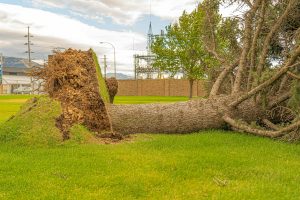

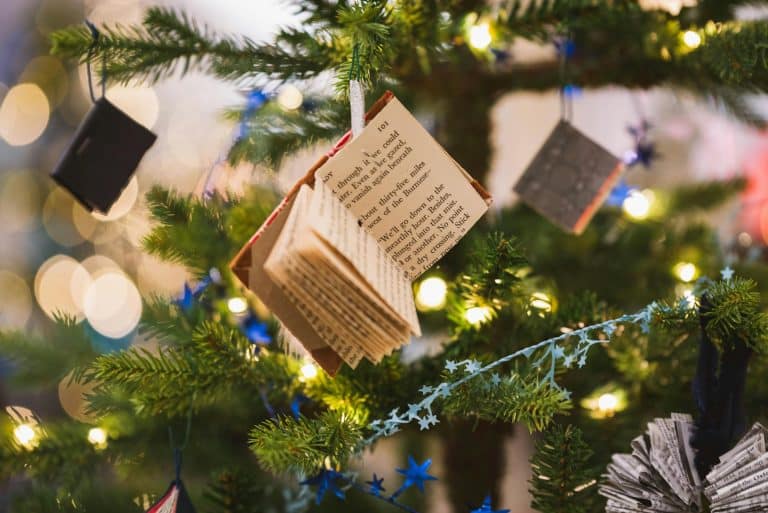


One Response
Hello, I have a large crabapple tree that is about 30 feet tall and spreads about 30 feet wide and has 4 trunks at the stump with shaggy bark. I used google lens, but there were no trees it could identify with.